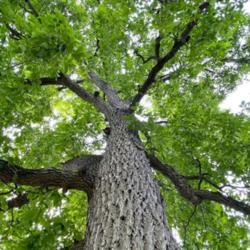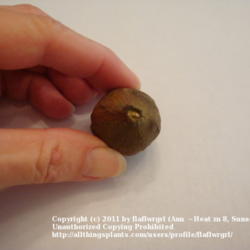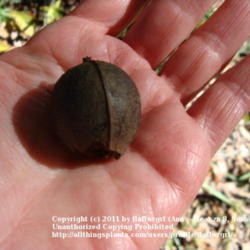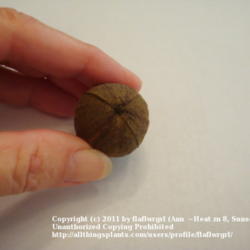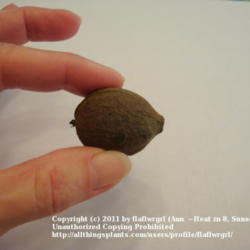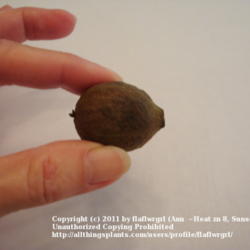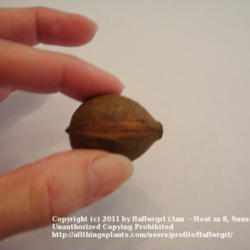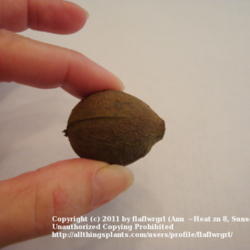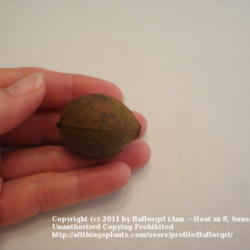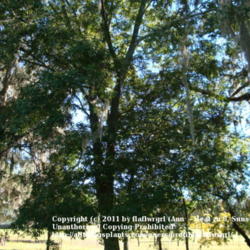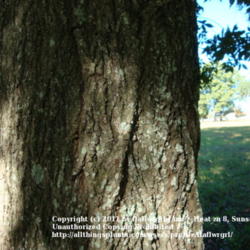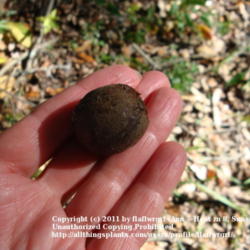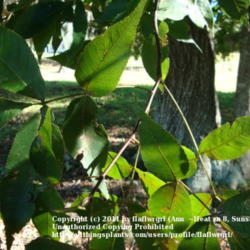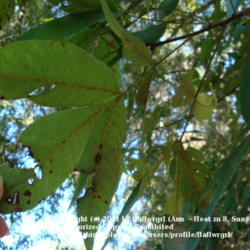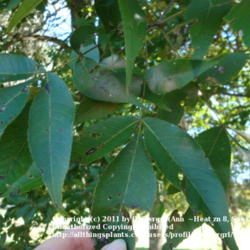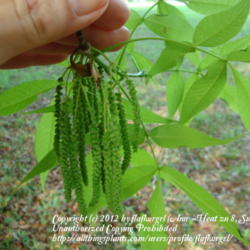Posted by
ILPARW (southeast Pennsylvania - Zone 6b) on Jan 6, 2021 9:50 AM concerning plant:
There is differing opinion of whether this Red Hickory is a separate species or a variety of the regular Pignut Hickory (Carya glabra, also called Smooth Hickory). Red Hickory is a tall, evenly branched, tightly weaved bark tree. Possibility Place Nursery, a wholesale nursery of native woody plants in northeast Illinois reports it as growing 10 to 20 inches/year, and they sell some. A good growth rate as most hickories tend to grow about 6 to 10 inches/year. The nut is sweet to eat. Sometimes the Red Hickory and the Pignut (Smooth) Hickory cross to produce hybrids. I posted photos from my Facebook friend of Solomon Doe who is co-owner of a native plant nursery called "Indigenous Landscapes" in the Cincinnati, Ohio area, and who grows a whole bunch of hickory species; and the business is a good source of native woody plant information on Facebook and on a website.
Posted by
flaflwrgrl (North Fl. - Zone 8b) on Nov 20, 2011 7:05 PM concerning plant:
This tree can be very difficult to distinguish from Carya glabra (Pignut Hickory) & at one time was considered the same. Carya ovalis, the Red Hickory, is a fairly uncommon but widespread Hickory native to eastern North America. It is typically found growing in dry, well drained sandy upland ridges and sloped woodlands from southern Ontario, Canada, and in the United States east to New Hampshire, south to northern Florida west to eastern Texas and north-west to Nebraska.
It has a single trunk which is straight & msot often continues for the entire height of the tree. Some specimens are found where the trunk splits into a few large limbs once they have emerged from the canopy. It has strong, thick, long branches reaching upward in the upper crown & drooping in the lower crown. Branches around mid height are horizontal more or less. Because of this the tree creates a wide, thick, column shape which casts heavy shade. Individual trees have been known to live 100 - 250 years.
Leaves alternate & are pinnately compound, 8-12" in length & have 5 or 9 leaflets but most often 7. the leaflets have a lanceolate shape are finely serrate. they are green on top & bottom. The main leaf stem is slender & can be pubescent or glabrous as well as often being red.
Both male & female flowers are born on the same tree. The males are drooping catkins, 3 from 1 stalk & are 2-3" in length. Female flowers are short in clusters at the end of the branches. Bloom time is mid-spring.
Mature trees have grey bark which is made up of tight intersecting ridges with flat tops. The ridges can appear block-like but most often are strap-like. On occasion, the ridges may pull from the trunk in peeling strips which are loose at both ends. This feature is a characteristic trait of Shagbark & Shellbark hickories. Young, rapidly growing trees are more likely to produce peeling bark than are mature trees.
Fruit matures in fall, nuts in tough, splitting oval shaped husks without a pronounced "neck", 2.5 to 3 cm long and about 2 cm wide; husk thin, about 2 to 2.5 mm thick, splitting freely to the base; nut with ridges extending from 1/3 to 1/2 its length; shell thin; kernel small and sweet.
